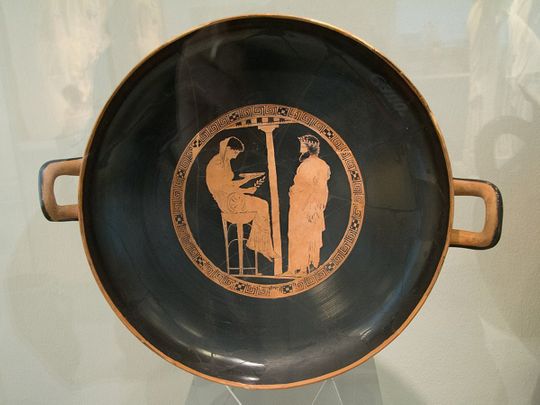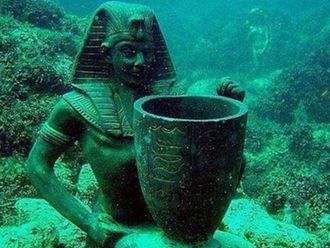
Atlantis. The Oracle at Delphi. Ancient myths and legends have been feeding people’s imaginations for generations. But could there be some truth to them?
Click start to play today’s Crossword, where “ancient legends” are part of a clue.
While a vast majority of tales are just elaborate stories that generations have passed down through the ages, there are a few well-known legends that have root in real geological events of the past.
Here are three that may surprise you:
1. Atlantis
Myth: The ancient Greek philosopher Plato wrote of a great civilisation that lived in a utopia and had a formidable navy. The citizens of this city, Atlantis, were supposedly half-human, half-deities. As the myth goes, their home, which was located on islands shaped like an enormous series of concentric circles, was destroyed in a catastrophe.
Science: Atlantis likely wasn’t a real place, but could have been inspired by a real island civilisation. Some think it may be Santorini, in Greece. Today, it’s an archipelago, but thousands of years ago, it was a solitary island with a volcano named Thera. Around 3,500 years ago, the volcano erupted, destroying the island, setting off tsunamis and unleashing tons of sulfur dioxide into the atmosphere. The city of Helike in Greece is also a contender as the inspiration of Atlantis. It was eradicated by an earthquake and tsunami in December, 373 BC.
2. The Oracle at Delphi
Myth: On the slopes of Mount Parnassus, in Delphi, Greece, was a temple devoted to the deity Apollo. In a secret chamber of the temple, a priestess called the Pythia would breathe in vapours emanating from a crack in the rock, and descend into a state of frenzy. She would then supposedly channel Apollo and speak gibberish, while another priest would translate it into prophesies.
Science: There’s no doubt the temple was real, and scientists have since discovered two geological faults running beneath the site (which is now in ruins). They surmise that gas emanated from those fissures, and although there is some debate about what the gas composed of – ethylene, benzene, or a combination of carbon dioxide and methane – inhaling the fumes is likely to have led to the Pythia’s temporary state of euphoria.
3. Namazu the Earthshaker

Myth: Lying far beneath Japan is a giant catfish named Namazu. The deity of Kashima keeps it still with the help of an enormous stone placed on the fish’s head. But when the deity slips or gets distracted, Namazu moves its feelers or tail, compelling the entire ground to shake.
Science: Japan is at the centre of several tectonic plates. Not just that, it is home to several volcanoes and has a number of seismic faults. While natural earthquakes solve the origin of the myth, the reason why a catfish was named the “Earthshaker” is likely because in Japanese mythology, catfish are supposedly able to predict earthquakes. No research has revealed this to be true, however.
What do you think of these ancient legends’ origins? Play today’s Crossword and tell us at games@gulfnews.com.









